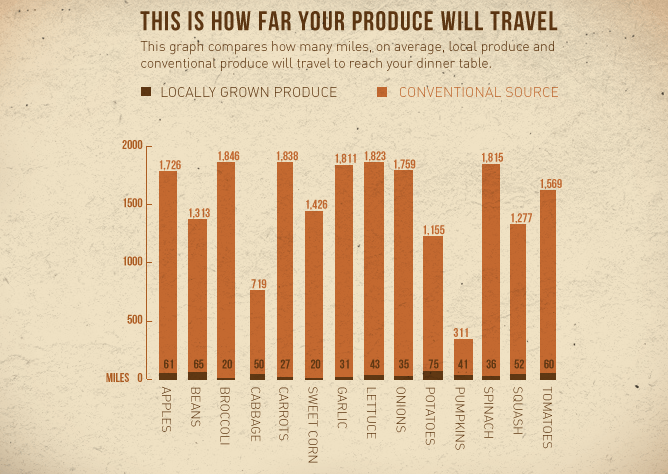
How far does our Food Travel?
Share
What’s the relation between the food on our plate and greenhouse gas emissions worldwide?
In most of Canada, we deal with a difficult growing climate that limits our agricultural output to less than 50% of other countries. During the winter months, our current food distribution system must rely on the importation of most fruits and vegetables. In most cases, our produce travels upwards of 2500km from its country of origin to get to our table. In fact, a recent study shows that for an average Canadian meal, food has travelled roughly 3000km. This number may be higher during the winter months when less produce can be grown locally. We consume food that has been harvested early and packaged for the journey. And once production has been harvested, it begins to slowly lose its nutritional value and even its taste.

In all, it’s estimated that the current global food supply chain is responsible for more than 50% of all greenhouse gas emissions. Simply put, something has to change. Luckily, a major part of the problem rests in how food gets to us, and we have both the technology and know-how to seriously disrupt the current model.

Independent of climate, we can grow our produce indoors, vertically, while protecting it against harsh weather and pests, and while saving resources like land, soil, and water. And what’s more, we can virtually eliminate the concept of food travel. At Nutritower, we estimate that one tower can save over one million food km of travel each year. So next time you sit down for a meal, take a second to think about where your food is coming from. Because in most cases, there’s a way to grow it closer to home, while maintaining its nutrient density and its flavour, and while simultaneously making the world a better place.
